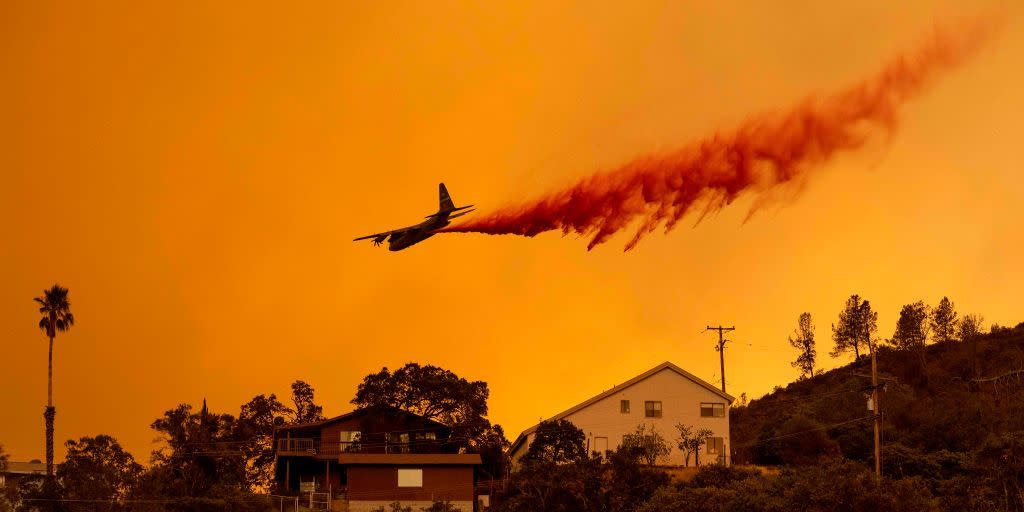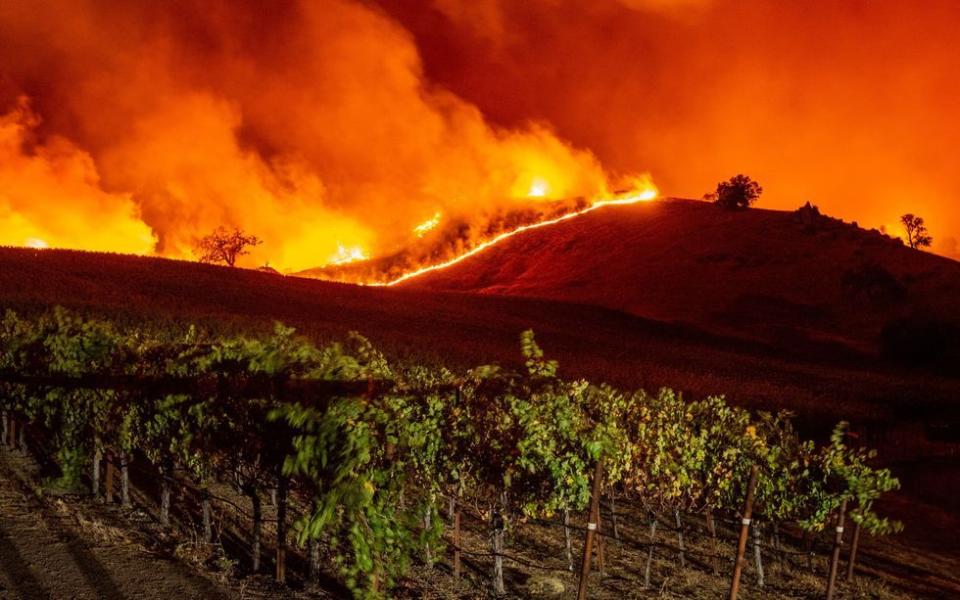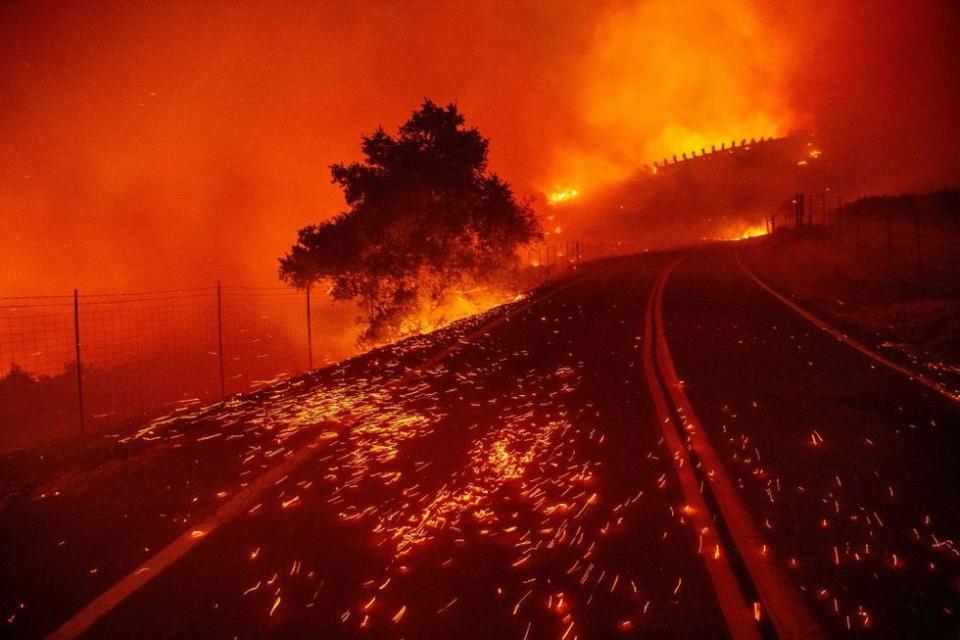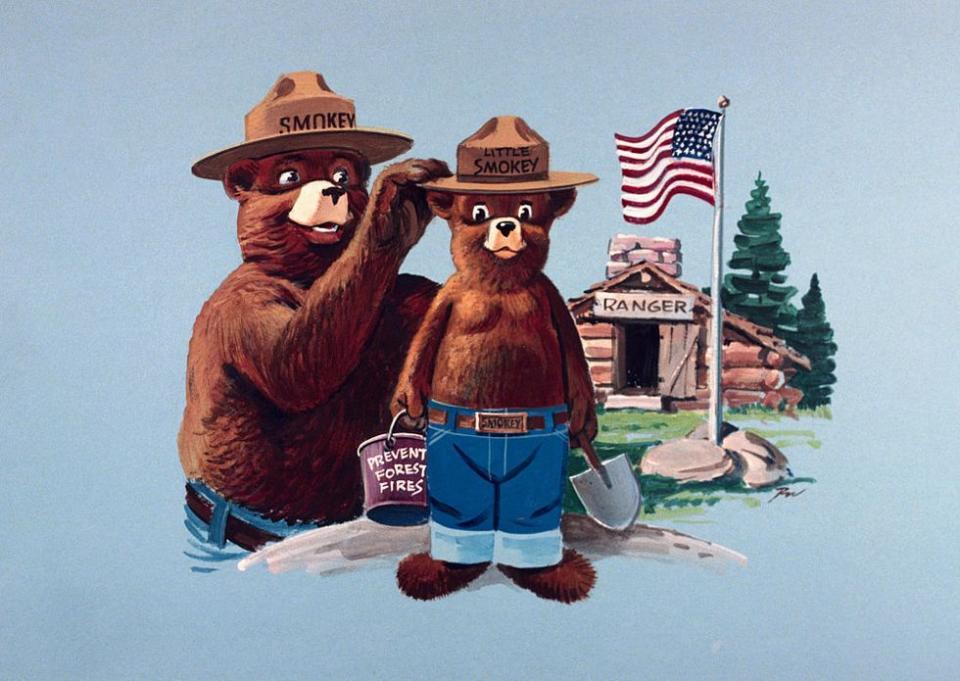Over 30 Wildfires Are Burning in California Right Now

Several large fires—the LNU Lightning Complex Fire, CZU Lightning Complex Fire, and the Hennessey Fire, for example—are burning across California.
These massive fires are driven by a combination of things such as climate change, difficult wind conditions, and years of fire suppression.
Wildland fires have become more intense, lasted longer, and burned more acres across California in recent years.
More than 30 wildland fires are burning across California, after a lightning storm swept across the northern part of the state earlier this week.
North of San Francisco, the LNU Lightning Complex Fire—a cluster of blazes spread across Napa, Sonoma, Lake and Solano counties—has forced tens of thousands of evacuations in the region, including near the city of Vacaville, which has a population of over 100,000 people.
Dive deeper. ➡ Read best-in-class science features and get unlimited access to Pop Mech, starting now.
Along the coast, the CZU August Lightning Complex Fire rages on in Santa Cruz and San Mateo counties. The 10,000-acre blaze has forced roughly 22,000 people from their homes. Over 5,000 residents in Boulder Creek were given immediate evacuations orders in the middle of the night, according to the Washington Post.
This fire burning north of #Vacaville reminds me of Santa Rosa in 2017. When people went to bed, the fire was miles away. The winds blew it over Mt Vaca & all of a sudden it’s right here. Middle of the night evacuations with a route out that looks like this. #LNULightningComplex pic.twitter.com/kpxVQGdL2F
— Katie Nielsen (@KatieKPIX) August 19, 2020
Fires ignite for any number of reasons. While some fires do occur naturally—like those sparked by this week's lightning storm—most are inadvertently set by humans, according to the San Francisco Chronicle.
In recent years, Pacific Gas & Electric's poorly maintained infrastructure have sparked a number of large fires, several have been ignited by discarded cigarette butts, and a handful of blazes have spiraled out of control at homeless encampments or been set off by fireworks.
Fighting these fires in California's varied terrain is undoubtedly challenging, as firefighters have deep canyons and steep hills to contend with. The spread of COVID-19 has complicated the response to many of these fires this year; resources are tight, and agencies are stretched thin without the help of inmate firefighters, who typically assist in the effort. With high winds and crushing heat expected this week, the outlook is grim.
If it seems like these fires have gotten more frequent, more intense, and lasted longer, you’re right. It takes a perfect storm of conditions to turn a small spark into a vast conflagration that can char hundreds of thousands of acres.
So why is California burning so badly?
Reason #1: Climate Change

There is no question that climate change has played a significant role in shaping the number and intensity of these fires. In recent years, California’s climate has gotten hotter. Drier conditions mean less snowpack in the Sierras, less runoff in the spring, and less moisture for vegetation. These conditions have made it especially easy for massive wildland fires to ignite and quickly burn through parched vegetation.
As the The New York Times reports, nine of the 10 largest fires in the state’s history have occurred in the past ten years, and it’s no coincidence that nine of the ten hottest years on record have happened since 2000. In 2016, the hottest year on record, the average global temperature was 1.78 degrees Fahrenheit above the 20th-century average, according to NOAA.
The Sobranes fire tore through Monterey County in 2016, burning over 132,000 acres. 2015, 2017 and 2018, the next hottest years, saw the Valley Fire (the fourth most destructive in California history), the Thomas Fire in Ventura County (281,893 acres burned) and both the Camp Fire (the single deadliest fire in California’s history) and the Mendocino Complex Fire (the state’s largest ever), respectively.
In our increasingly warming world, ecosystems will continue to dry out, and subsequently, fires will only get more fierce, more frequent, and burn more of the state. The amount of land burned across California in the summer is roughly eight times higher than in the 1970s, according to National Geographic. And the state's fire season has gotten considerably longer, too, extending up to 75 days, in some cases. In reality, “fire season” is a remnant of cooler world.
“It just gets harder to predict,” Faith Kearns, of the University of California Institute for Water Resources in Oakland, told National Geographic. “We used to have a much more reliable rainy season and fire season, and a lot of variables are just shifting at the moment.”
Reason #2: The Winds

That brings us to winds. This past weekend, reports of a troubling weather phenomenon flooded in from Lassen County: a number of fire tornadoes had sprung up from the flames of the Loyalton Fire.
“It’s not like a typical tornado where it happens, everything clears out and you safely go and investigate,” National Weather Service meteorologist Dawn Johnson told The New York Times. “In this case, there’s a massive wildfire burning in the same location, so the logistics are a lot more complicated.”
Fire Tornado today outside Chilcoot and Hallelujah Junction California. This was intense and scary!!!! @TheTXWXchaser @spahn711 @JimCantore @ReedTimmerAccu @jeffpiotrowski #CAwx #LoyaltonFire #firenado #FireSeason2020 pic.twitter.com/vfwrTKK02n
— Tasha Joy (@That1GirlTasha) August 16, 2020
These incredibly high winds are, in large part, the reason why California’s fires swell to such massive sizes. High winds are especially tricky because they can prevent air support, in the form of retardant-dumping planes and water-dropping helicopters, from flying. Gusts can pick up embers and carry them to other locations, sparking new blazes for firefighters to contend with.
In 2018, a study published in the journal Environmental Letters suggested there are two separate fire seasons in Southern California. One, from June to September, is driven by warm, dry winds, sparking inland fires. The other fire season lasts from October through April and is driven by the famed Santa Ana winds, which blow west from the Great Basin and Mojave desert, sweeping over the Transverse Mountain Range and down into the valley.
These are the winds to worry about. The New York Times reported at the time that fires that ignite in the fall and winter months grow at a rate three times faster than others and more closely encroach on heavily populated areas.
While southern California is known for the Santa Ana Winds, Northern California has its own fierce wind conditions to contend with. The region is bombarded by similar gusts called the Diablo winds, which swing in from east, down the Sierras and funnel toward the coast. Like the Santa Anas, the Diablo winds can regularly generate gusts of up to 80 miles per hour.
Reason #3: Smokey Bear

It turns out Smokey Bear’s famous mantra “Only YOU can prevent forest fires” did more harm than good in the grand scheme of things. For more than a century, fire management officials have suppressed fires in the West, leading to an overgrowth of vegetation, or fuel, in ecosystems, according to the U.S. Forest Service. Now, we’re essentially playing catch-up.
Many of California’s ecosystems are well-adapted to fire. Some native plant and tree species even require it to sprout new growth. But these delicate systems often operate on specific cycles. For example, a chaparral stand may have a burn cycle of anywhere from 30 to 100 years, where a ponderosa pine stand may need only a few years between each fire. If intense fires occur too frequently, native plant species can become replaced by, say, invasive grasses, which burn quickly and don’t hold soil well.
Now, forest and fire management officials are working overtime to make up for losses, combatting overgrowth through mechanical trimming of brush and the prescribed burning of tens of thousands of acres, according to Outside. But about 50 percent of the Forest Service's yearly budget goes to combating massive fires across the west, according to the agency. This leaves few resources, little time and less money to conduct the type of forest management needed that could help mitigate destructive fires in the first place.
To make matters worse, people have been moving farther and farther into the Wildland Urban Interface, or WUI, which puts them at risk of experiencing, or even starting a fire. This also makes it difficult for fire management officials to set controlled burns—which mitigate the build-up of vegetation or fuel—in the WUI because there’s a high likelihood that homes would be lost if the burn spirals out of control.
You Might Also Like

